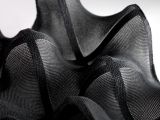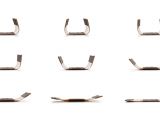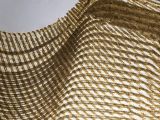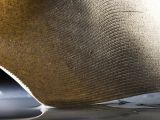The 3D printing technology, otherwise known as additive manufacturing, is something that has been around for about three decades but only now has begun to come into its own. However, that doesn't seem to have dissuaded MIT from jumping right into the next boat.
The Self-Assembly Lab at MIT has introduced a new technology that claims to have what it takes to create materials with their own programming.
The ones behind the research, most notable research scientists and director of the Self-Assembly Lab Skylar Tibbits, call the technology 4D printing.
Sounds a bit esoteric, when put like that, but the products intended to represent this technology aren't even close to supernatural.
Instead, what MIT means by 4D printing is a sort of 3D printing technology that creates objects capable of further changing their shape once they have been created.
Programmable materials are the new groove
Perhaps they aren't yet, since they're just theoretical for now, but eventually we should see for ourselves what MIT wants to make.
Essentially, the plan is to produce hybrid plastics, wood grains, textiles and carbon fiber that can adjust their properties and shape based on temperature changes, pressure, moisture or other conditions that can be anticipated.
It's like the concept of the self-assembling lamp, only instead of a small PC handling the transformation, the whole thing would happen naturally, just because of what the product is made from. This is how the fourth dimension comes into the equation: time.
Practical applications for 4D printed objects
There are many of them, applicable to automotive, medical, construction and aviation industries, not to mention consumer products like furniture and portable knickknacks.
MIT's example was of a carbon fiber-based object skeleton programmed to transform its shape depending on what materials are 3D printed onto it.
We can think of many things that this can lead to: self-assembling/folding chairs are one thing, maybe like recliners that slacken the hotter it gets on the beach, or a blanket that folds tighter around you the chillier it gets.
Toys are another thing. You could buy a sheet of fabric that would fold itself into a dog after a while of being left to lie around on the floor.
Carbon fiber can control airflow in airplanes too, as its bi-directional nature can respond to heat in different ways. Rubber hasn't been forgotten either, as it can allow tires to grow rougher when the moisture or cold in the air becomes more pronounced. No need for special tires during winter anymore!
Even the ever elusive wood can be managed, although wood grains probably won't ever perfectly emulate the look of natural wood. Still, objects 4D printed from them ought to shrug off humidity at the very least, antique veneer or not.
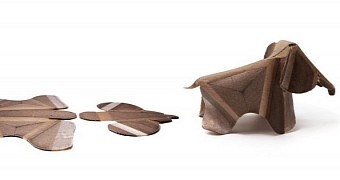
 14 DAY TRIAL //
14 DAY TRIAL // 
